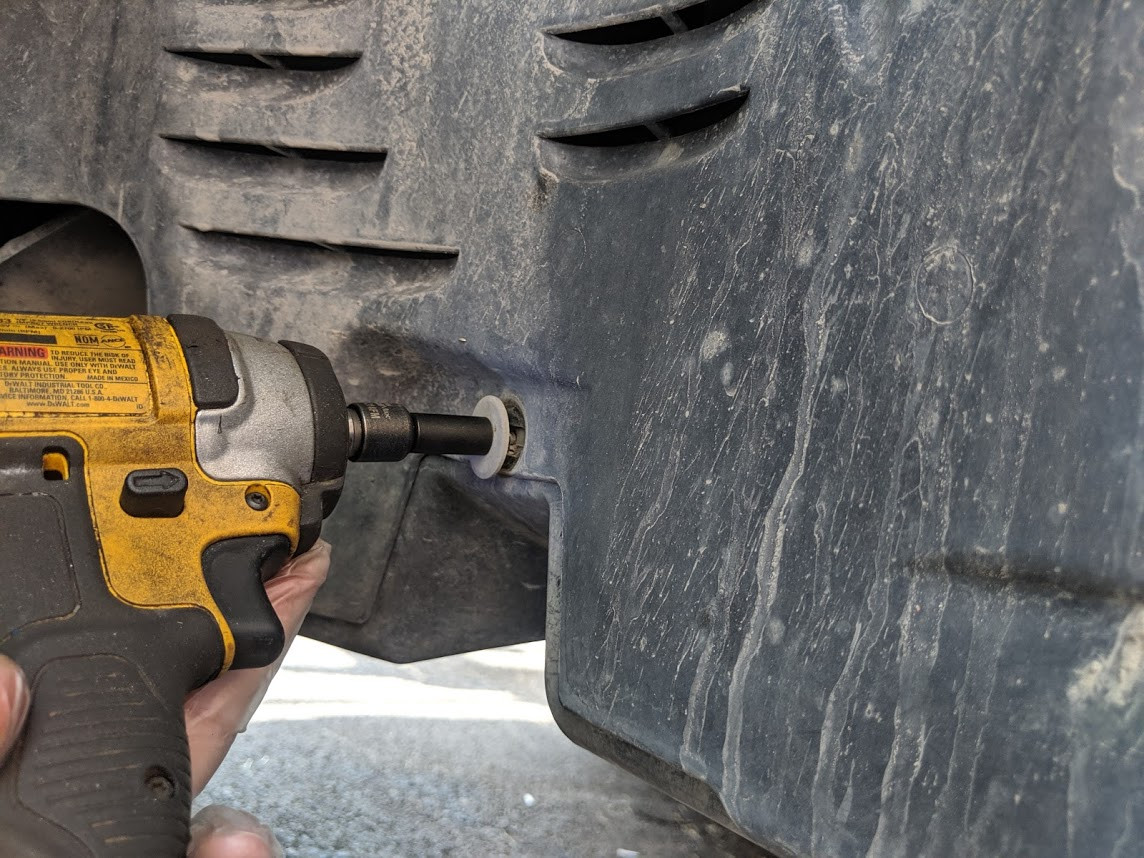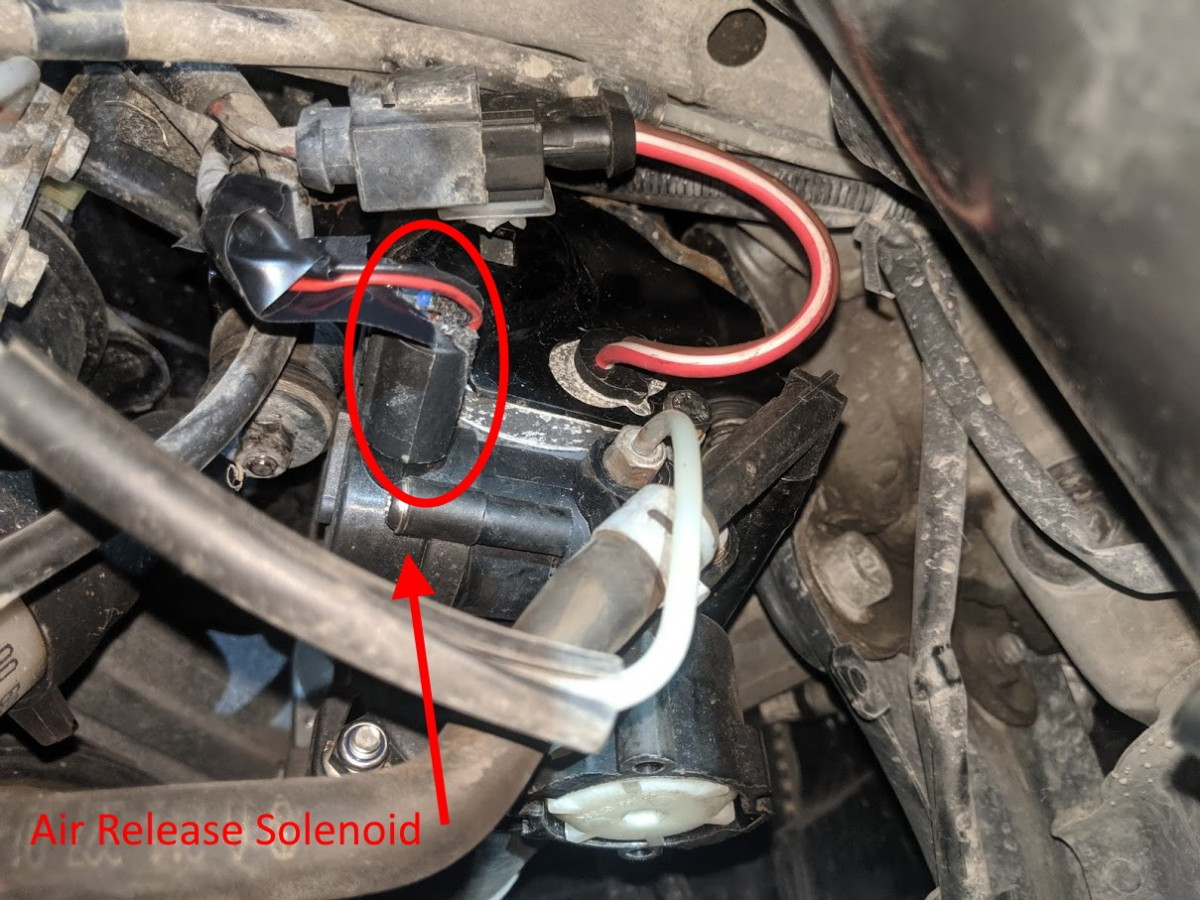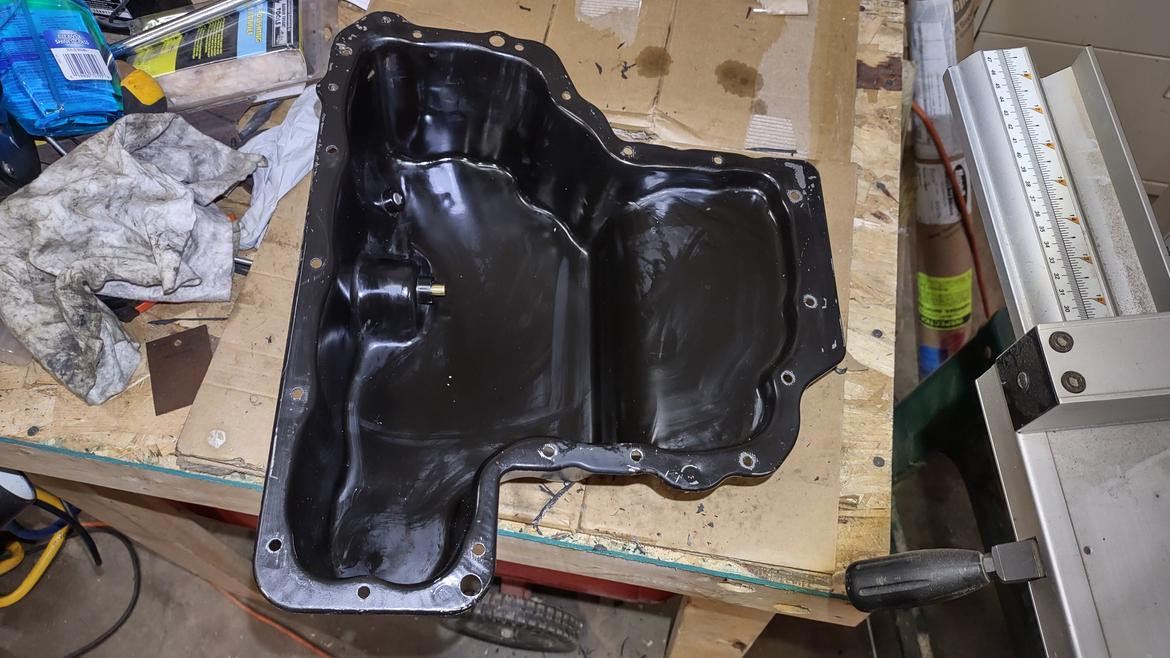Decoding the 5350 Mercedes Fault Code: A Comprehensive Guide

Is your Mercedes-Benz showing the 5350 fault code? This code often points to issues within the Airmatic system, specifically related to the airmatic pressure release valve. At CARDIAGTECH.NET, we help you diagnose and resolve this problem efficiently and get your Mercedes back to its smooth, comfortable ride. This guide will explore the common causes, troubleshooting steps, and solutions, helping you understand how to fix this issue or find the right tools for your needs, and save money on costly repairs with detailed troubleshooting for air suspension malfunctions.
1. Understanding the 5350 Mercedes Fault Code
The 5350 fault code in Mercedes-Benz vehicles indicates a problem with the Airmatic pressure release valve, which is part of the air suspension system. This system is designed to provide a smooth and comfortable ride by using air struts instead of traditional coil springs.
What the Code Means:
The code “5350 – A9/1y1 Airmatic pressure release valve – Open circuit” means that the vehicle’s computer has detected an electrical issue with the valve. An open circuit means that the electrical connection to the valve is broken, preventing it from functioning correctly.
Why is the Air Suspension Important?
The air suspension system enhances ride quality and handling by automatically adjusting the suspension based on road conditions and vehicle load. When the system malfunctions, it can lead to a harsh ride, poor handling, or even the inability to adjust the vehicle’s height.
Where is the Airmatic Pressure Release Valve Located?
The airmatic pressure release valve is typically located near the air suspension compressor. Depending on the Mercedes-Benz model, the compressor is usually found behind the front bumper, accessible by removing the lower splash shield or the wheel well liner.
2. Common Causes of the 5350 Fault Code
Several factors can trigger the 5350 fault code in a Mercedes-Benz. Identifying the root cause is crucial for effective repair. Here are the most common causes:
- Damaged Wiring Harness: The wiring harness that connects to the air release valve can become damaged over time. This damage can be due to physical stress, corrosion, or rodent activity.
- Faulty Air Release Valve: The air release valve itself may be defective. Internal components can fail, preventing the valve from opening or closing correctly.
- Corroded Electrical Connections: Corrosion on the electrical connectors can disrupt the signal to the valve, leading to an open circuit.
- Stuck Valve: Debris, dirt, or rust can cause the air release valve to become stuck in the open or closed position.
- Air Suspension Compressor Issues: While less common, problems with the air suspension compressor can sometimes trigger the 5350 code.
- Blown Fuse: In some cases, a blown fuse in the Airmatic system can cause the air release valve to stop functioning, leading to the fault code.
 Mercedes Air Suspension Compressor Location
Mercedes Air Suspension Compressor Location
Alt: Locating the Mercedes air suspension compressor behind the front bumper.
3. Diagnosing the 5350 Fault Code: A Step-by-Step Guide
Diagnosing the 5350 fault code requires a systematic approach to identify the faulty component. Here’s a step-by-step guide to help you troubleshoot the issue:
Step 1: Scan the System
Use an OBD-II scanner to confirm the 5350 fault code. A scanner will also reveal any other related codes that can provide additional insights. CARDIAGTECH.NET offers professional-grade scanners that provide detailed diagnostic information.
Step 2: Visual Inspection
- Wiring Harness: Check the wiring harness connected to the air release valve for any signs of damage, such as cuts, abrasions, or corrosion.
- Electrical Connectors: Inspect the electrical connectors for corrosion. Clean them with an electrical contact cleaner if necessary.
- Air Release Valve: Examine the air release valve for any visible damage or signs of wear.
Step 3: Test the Air Release Valve
- Resistance Test: Use a multimeter to measure the resistance of the air release valve. A reading outside the specified range indicates a faulty valve. Consult the vehicle’s repair manual for the correct resistance values.
- Voltage Test: Check the voltage at the air release valve connector. Ensure that the valve is receiving the correct voltage when activated.
Step 4: Check the Air Suspension Compressor
- Compressor Function: Verify that the air suspension compressor is functioning correctly. Listen for any unusual noises or signs of distress.
- Pressure Output: Use a pressure gauge to check the output pressure of the compressor. Insufficient pressure can affect the operation of the air release valve.
Step 5: Inspect Fuses and Relays
- Fuses: Check the fuses related to the Airmatic system. Replace any blown fuses with the correct amperage.
- Relays: Test the relays to ensure they are functioning correctly. A faulty relay can prevent the air release valve from receiving power.
Tools You’ll Need:
- OBD-II Scanner: For reading and clearing fault codes.
- Multimeter: For testing electrical components.
- Socket Set: For removing and installing components.
- Electrical Contact Cleaner: For cleaning corroded connectors.
- Pressure Gauge: For checking compressor output.
4. Solutions for the 5350 Mercedes Fault Code
Once you’ve identified the cause of the 5350 fault code, you can implement the appropriate solution. Here are several possible solutions, ranging from simple fixes to more complex repairs:
Solution 1: Repair or Replace the Wiring Harness
If the wiring harness is damaged, repair it by splicing in new wires and using heat-shrink tubing to protect the connections. If the damage is extensive, replace the entire wiring harness.
Solution 2: Replace the Air Release Valve
If the air release valve is faulty, replace it with a new one. Ensure that the replacement valve is compatible with your vehicle model.
Solution 3: Clean Corroded Electrical Connections
Clean corroded electrical connections with an electrical contact cleaner. Apply dielectric grease to protect the connections from future corrosion.
Solution 4: Free a Stuck Valve
Remove the air release valve and attempt to free it. Clean the valve with a solvent to remove any debris or rust. If the valve cannot be freed, replace it.
Solution 5: Repair or Replace the Air Suspension Compressor
If the air suspension compressor is faulty, repair it if possible. Common repairs include replacing the piston ring or rebuilding the compressor. If the compressor is beyond repair, replace it with a new one.
Solution 6: Replace Blown Fuses and Faulty Relays
Replace any blown fuses with the correct amperage. Test the relays and replace any that are not functioning correctly.
Solution 7: Software Update
In some cases, a software update to the Airmatic system can resolve issues related to the air release valve. Consult with a Mercedes-Benz dealer or a qualified mechanic to perform the update.
5. Step-by-Step Replacement of the Air Release Valve
Replacing the air release valve is a straightforward process that can be completed with basic tools. Here’s a step-by-step guide:
Step 1: Gather Your Tools and Materials
- New air release valve
- Socket set
- Torx screwdriver
- Electrical contact cleaner
- Dielectric grease
Step 2: Disconnect the Battery
Disconnect the negative terminal of the battery to prevent electrical shorts.
Step 3: Access the Air Suspension Compressor
Locate the air suspension compressor behind the front bumper. Remove the lower splash shield or the wheel well liner to access the compressor.
Step 4: Disconnect the Electrical Connector
Disconnect the electrical connector from the air release valve.
 Disconnect Air Release Valve Wiring
Disconnect Air Release Valve Wiring
Alt: Disconnecting the wiring harness from the Mercedes air release valve.
Step 5: Remove the Old Air Release Valve
Remove the two Torx screws that hold the air release valve in place. Carefully remove the old valve.
Step 6: Install the New Air Release Valve
Install the new air release valve, ensuring it is properly seated. Tighten the Torx screws to the specified torque.
Step 7: Connect the Electrical Connector
Connect the electrical connector to the new air release valve.
Step 8: Reassemble and Test
Reinstall the lower splash shield or the wheel well liner. Reconnect the battery and start the vehicle. Use an OBD-II scanner to clear the 5350 fault code and verify that the air suspension system is functioning correctly.
6. Avoiding Future Issues: Maintenance Tips
Preventing future issues with the air suspension system involves regular maintenance and care. Here are some tips to help keep your Mercedes-Benz Airmatic system in top condition:
- Regular Inspections: Inspect the air suspension system regularly for any signs of damage, leaks, or corrosion.
- Clean Electrical Connections: Keep the electrical connections clean and protected with dielectric grease.
- Address Issues Promptly: Address any issues with the air suspension system promptly to prevent further damage.
- Avoid Overloading: Avoid overloading the vehicle, as this can put excessive strain on the air suspension system.
- Professional Servicing: Have the air suspension system professionally serviced at recommended intervals.
7. Why Choose CARDIAGTECH.NET for Your Diagnostic Needs
At CARDIAGTECH.NET, we understand the complexities of modern vehicle diagnostics. We offer a range of professional-grade diagnostic tools and equipment to help you accurately diagnose and repair issues with your Mercedes-Benz. Here are some reasons to choose us:
- High-Quality Products: We offer a wide selection of high-quality diagnostic tools, including OBD-II scanners, multimeters, and pressure gauges.
- Expert Support: Our team of experienced technicians can provide expert support and guidance to help you diagnose and repair your vehicle.
- Competitive Pricing: We offer competitive pricing on all our products, ensuring you get the best value for your money.
- Fast Shipping: We offer fast shipping on all orders, so you can get the tools you need quickly.
- Customer Satisfaction: We are committed to customer satisfaction and strive to provide the best possible service.
Our UCAN Professional Diagnostic Scanner is an excellent choice for Mercedes-Benz owners. It provides complete access to all vehicle systems, free lifetime updates, and advanced bi-directional controls.
Alt: The UCAN Professional Diagnostic Scanner offers comprehensive diagnostics for all vehicle systems.
8. The Financial Impact of Ignoring the 5350 Fault Code
Ignoring the 5350 fault code can lead to more significant problems and higher repair costs down the road. Here’s a breakdown of the potential financial impacts:
| Problem | Potential Cost |
|---|---|
| Air Suspension Compressor Failure | $500 – $1500 (replacement cost) |
| Air Strut Damage | $300 – $1000 per strut (replacement cost) |
| Tire Wear | Increased tire wear due to improper suspension alignment, leading to premature tire replacement. |
| Reduced Fuel Efficiency | The vehicle’s computer may compensate for the suspension issue, leading to reduced fuel efficiency. |
| Safety Concerns | Poor handling and stability can increase the risk of accidents. |
| Progressive Damage to Other Components | If the airmatic suspension issue is left unaddressed for long periods, it could put a strain on other connected components and lead to more severe, expensive repairs. |
Addressing the issue promptly can save you money in the long run by preventing these costly repairs.
9. Understanding Airmatic System Components
To better understand the 5350 fault code and its implications, it’s helpful to know the main components of the Airmatic system:
- Air Suspension Compressor: This compressor supplies pressurized air to the system.
- Air Struts: These replace traditional coil springs and provide cushioning and support.
- Air Reservoir: This stores compressed air for the system.
- Valve Block: This controls the distribution of air to the individual struts.
- Height Sensors: These monitor the vehicle’s height and provide feedback to the control module.
- Control Module: This controls the entire system, adjusting the suspension based on road conditions and vehicle load.
- Pressure Release Valve: Releases pressure from the system when needed.
10. The Importance of Using OEM Parts
When replacing components in the Airmatic system, it’s crucial to use original equipment manufacturer (OEM) parts or high-quality aftermarket parts. OEM parts are designed to meet the exact specifications of your vehicle, ensuring proper fit and function.
Benefits of Using OEM Parts:
- Reliability: OEM parts are typically more reliable and durable than aftermarket parts.
- Compatibility: OEM parts are designed to work seamlessly with your vehicle’s existing systems.
- Warranty: OEM parts often come with a warranty, providing added peace of mind.
FAQ: Addressing Common Questions About the 5350 Code
1. Can I drive my Mercedes-Benz with the 5350 fault code?
It’s not recommended. Driving with the 5350 fault code can lead to a compromised ride, poor handling, and potential damage to other components.
2. How do I clear the 5350 fault code?
Use an OBD-II scanner to clear the fault code after addressing the underlying issue.
3. Is the 5350 fault code specific to Mercedes-Benz vehicles?
Yes, the 5350 fault code is specific to Mercedes-Benz vehicles with the Airmatic suspension system.
4. Can a low battery cause the 5350 fault code?
A low battery can sometimes cause various electrical issues, but it’s less likely to directly cause the 5350 fault code. However, ensure your battery is in good condition as part of your troubleshooting process.
5. How often should I have my Airmatic system serviced?
It’s recommended to have your Airmatic system serviced every 50,000 to 75,000 miles, or as recommended by your vehicle’s manufacturer.
6. Can I replace the air release valve myself?
Yes, replacing the air release valve is a relatively straightforward process that can be done with basic tools.
7. What is the cost of replacing the air release valve?
The cost of replacing the air release valve can vary depending on the source of the part and labor costs. Generally, you can expect to pay between $100 and $300 for the part and an additional $100 to $300 for labor if you choose to have a professional perform the replacement.
8. Are there any common symptoms associated with the 5350 fault code?
Common symptoms include a harsh ride, the vehicle sitting lower than normal, and the “Airmatic Failure Visit Workshop” message on the dashboard.
9. Can moisture affect the air suspension system?
Yes, moisture can lead to corrosion and damage to various components of the air suspension system, including the air release valve.
10. Where can I find reliable OEM parts for my Mercedes-Benz?
You can find reliable OEM parts at Mercedes-Benz dealerships, authorized parts retailers, and reputable online suppliers.
Conclusion
The 5350 Mercedes fault code can be a frustrating issue, but with the right knowledge and tools, it can be diagnosed and resolved effectively. At CARDIAGTECH.NET, we’re committed to providing you with the highest quality diagnostic tools and expert support to keep your Mercedes-Benz running smoothly. Remember, addressing the issue promptly can save you money and ensure a comfortable and safe driving experience.
Is your Mercedes-Benz giving you trouble? Don’t wait for the problem to worsen. Contact CARDIAGTECH.NET today at +1 (641) 206-8880 or visit us at 276 Reock St, City of Orange, NJ 07050, United States for expert advice and the best diagnostic tools on the market. Let us help you diagnose and fix your Mercedes-Benz quickly and efficiently. Visit CARDIAGTECH.NET now for more information. We’re here to help you get back on the road with confidence!



